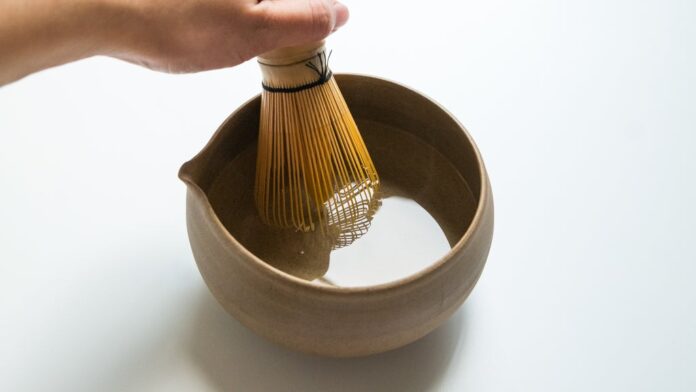Matcha The Chasen is not just a trendy beverage; it’s an art form, a centuries-old tradition that has been handed down through generations. This vibrant green tea powder, renowned for its unique flavor and numerous health benefits, requires meticulous preparation. One critical aspect of making a perfect cup of matcha is whisking. But what happens if you don’t whisk matcha properly? Let’s delve into the fascinating world of matcha and explore the consequences of neglecting this essential step.
The Importance of Whisking Matcha
Before we dive into the intricacies of matcha whisking, it’s essential to understand the role it plays in the overall experience. Matcha is not like your regular green tea; it’s made from finely ground tea leaves, which are traditionally grown in the shade, giving it a distinct flavor and vibrant color. The powder is the result of a labor-intensive process that involves steaming, drying, and meticulous stone grinding.
A Closer Look at Matcha Powder
The delicate matcha powder is prone to clumping, which can affect the final product’s texture and flavor. Whisking helps in breaking down these clumps, ensuring that every sip of your matcha is smooth and delicious.
The Role of Whisking in Flavor and Texture
Matcha’s flavor and texture are incredibly sensitive to the whisking process. Whisking incorporates air into the tea, creating a creamy, frothy texture that is highly desired. It also ensures that the powder is evenly dispersed, preventing any unpleasant grittiness.
Whisking Techniques
There are various whisking techniques, such as the traditional “W” or “M” motion and the rapid back-and-forth whisking, each influencing the final taste and texture of your matcha.
Potential Consequences of Not Whisking Matcha
Bitterness and Graininess
Neglecting proper whisking can lead to bitterness in your matcha. Clumps of undissolved matcha powder can release an intense, bitter flavor when they hit your taste buds. This not only ruins the taste but also the experience.
Uneven Color
An unevenly whisked matcha will result in a cup with inconsistent color. The vibrant green color of matcha is part of its appeal, and a lumpy or uneven cup can be unappealing.
The Aesthetic Element
Matcha is not just about taste; it’s about aesthetics, too. The frothy, vibrant green layer that a well-whisked matcha creates on the surface adds to its allure. Without proper whisking, you miss out on this visual treat.
Whisking Tools and How to Use Them
To achieve the perfect matcha, you’ll need the right tools. A traditional bamboo whisk, known as a “chasen,” is the most common tool used to whisk matcha. It’s designed to create a fine froth, but there are also electric options available.
Step-by-Step Guide to Whisking Matcha
Whisking matcha may seem intimidating, but it’s a skill that can be acquired with a bit of practice. Here’s a step-by-step guide to help you master the art:
- Measure: Start by measuring the right amount of matcha powder.
- Prep Your Tools: Warm your bowl and moisten your whisk to ensure a smooth whisking process.
- Sift the Matcha: Sifting removes lumps and ensures even whisking.
- Add Water: Pour hot (not boiling) water into your bowl.
- Whisk: Use brisk, gentle strokes to create a frothy layer on top.
The Science Behind Matcha Whisking
Matcha whisking isn’t just about tradition; there’s science behind it. Proper whisking releases the tea’s amino acids, enhancing the flavor and mouthfeel.
Matcha and Health Benefits
Matcha’s benefits extend beyond its exquisite taste and texture. It’s packed with antioxidants and nutrients that support various aspects of your health.
Expert Tips for Perfect Matcha Whisking
To make your matcha whisking journey smoother, here are some expert tips:
- Use fresh, high-quality matcha.
- Invest in a quality whisk.
- Practice your whisking technique.
- Experiment with water temperature.
Frequently Asked Questions
- What is the ideal water temperature for matcha?
- The ideal water temperature for matcha is around 175°F (80°C), which is just below boiling.
- Can you overwhisk matcha?
- Yes, overwhisking can lead to excessive foam and may affect the texture. It’s essential to find the right balance.
- How can I fix lumps in my matcha?
- If you have lumps, try sifting your matcha before whisking, and whisk more vigorously to break them down.
- Is there a special type of whisk for matcha?
- Yes, a traditional bamboo whisk, or “chasen,” is designed specifically for whisking matcha.
- Can you use a blender for matcha?
- While it’s not traditional, a blender can be used to achieve a frothy texture, but it may not have the same finesse as a bamboo whisk.
Conclusion
Whisking matcha is more than a mere step; it’s a key to unlocking the full potential of this exquisite tea. The consequences of neglecting this process are evident in the taste, texture, and aesthetics of your matcha. So, the next time you prepare a cup, remember that the secret to an exceptional matcha “The Chasen” experience lies in the whisk. Don’t skip it!










